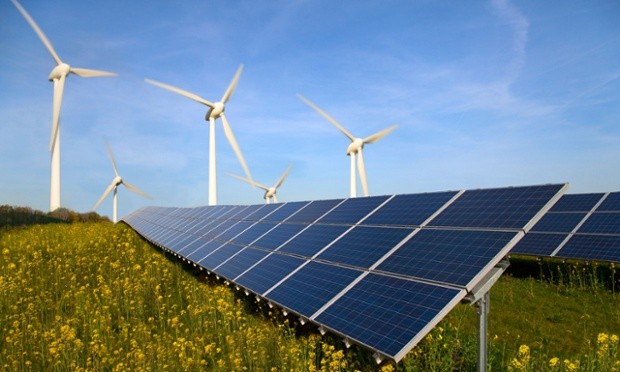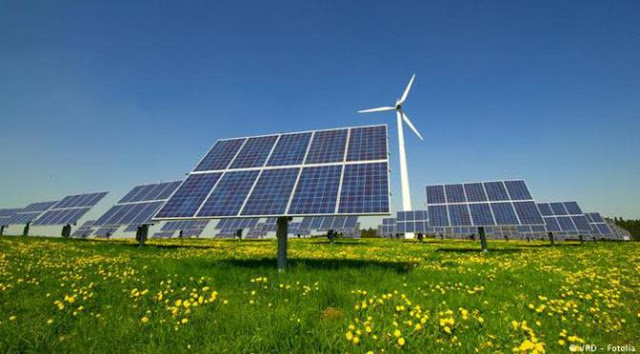Renewables were the biggest new source of electricity last year as the cost of building new wind and solar farms fell.
Clean energy provided 55 percent of all new capacity added worldwide, the most ever, and total investment was about double the amount for generators driven by fossil fuels, according to a report published Thursday by UN Environment, the Frankfurt School-UNEP Collaborating Centre and Bloomberg New Energy Finance.
Investment in clean power dropped 23 percent from 2015 to $241.6 billion, meaning that the new capacity installed came at a lower price. The average capital expenditure for a megawatt of wind and solar fell more than 10 percent, according to the study, and they are some of the cheapest sources of electricity in some countries.
“Renewables are much more competitive than they were five years ago,” Angus McCrone, chief editor at Bloomberg New Energy Finance, said in an interview. “In an increasing number of places, wind and solar may be the cheapest option.”

The data are similar to findings from the International Energy Agency, which said the capacity of renewables added in 2015 exceeded additions from all other sources for the first time and that the total installed base for renewables has now passed that for coal.
Bloomberg New Energy Finance said government mandates and incentives are helping drive renewables to become a bigger part of the global energy mix. The proportion of worldwide electricity produced by clean energy hit 11.3 percent in 2016, up from 6.1 percent at the start of the decade.
Last year, solar made up nearly half of all new renewable investments at $113.7 billion. While that was down 34 percent from 2015, it paid for 75 gigawatts of new capacity, the most ever. Solar panel prices have plunged more than 80 percent since the start of 2010, and wind power has declined more than 35 percent.
While much of the total decline in financing is pegged to lower equipment costs, some of is due to a slowdown in China, Japan and other emerging markets, McCrone said. Investment in China fell 32 percent to $78.3 billion and spending in Japan slumped 56 percent to $14.4 billion. The figure in the U.S. fell 10 percent to $46.4 billion.
“It’s a whole new world,” Michael Liebreich, the founder of New Energy Finance, said in a statement. “Even though investment is down, annual installations are still up. Instead of having to subsidize renewables, now authorities may have to subsidize natural gas plants to help them provide grid reliability.”


